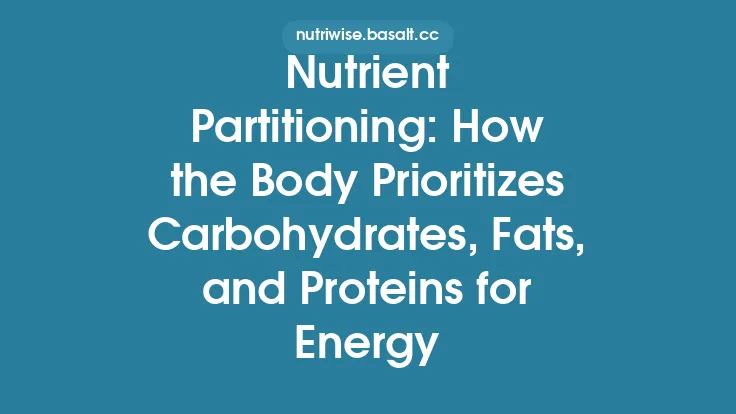Milk is a complex biological fluid whose nutritional value hinges largely on the proteins it contains. The two major protein families—caseins and whey proteins—are organized into micelles and soluble fractions that are finely tuned to survive the journey from the udder to the infant’s gut. When milk is subjected to pasteurization, a heat‑based preservation step, subtle but consequential alterations occur at the molecular level. These changes ripple through the digestive process, influencing how enzymes access the proteins, how quickly they are broken down, and what bioactive peptides ultimately become available for absorption. Understanding these transformations is essential for nutrition scientists, food technologists, and health‑conscious consumers who want to appreciate the lasting impact of a seemingly simple processing step.
Milk Protein Composition and Native Structure
Caseins
- Represent roughly 80 % of the total protein in bovine milk.
- Exist as a heterogeneous mixture of α‑s1, α‑s2, β, and κ caseins that self‑assemble into colloidal micelles.
- The micelle is stabilized by calcium phosphate nanoclusters and a surface layer of κ‑casein, which provides steric and electrostatic repulsion.
Whey Proteins
- Make up the remaining ~20 % and are primarily β‑lactoglobulin, α‑lactalbumin, serum albumin, and immunoglobulins.
- These proteins are globular, soluble, and rich in disulfide bonds that confer a compact tertiary structure.
In raw milk, the delicate balance between casein micelles and soluble whey proteins ensures optimal functionality (e.g., foaming, gelation) and digestibility. Enzymes such as pepsin in the stomach and pancreatic proteases in the small intestine recognize specific peptide bonds that are exposed on the protein surface.
Pasteurization: Process Parameters and Mechanisms
Pasteurization is designed to inactivate pathogenic microorganisms while preserving the sensory and nutritional qualities of milk. The most common regimes are:
| Method | Temperature (°C) | Holding Time (seconds) |
|---|---|---|
| Low‑temperature long‑time (LTLT) | 63 | 30 |
| High‑temperature short‑time (HTST) | 72 | 15 |
| Ultra‑high temperature (UHT) – not typical “pasteurization” but often grouped | 135–150 | 2–5 |
The heat exposure triggers several physicochemical events:
- Denaturation of heat‑labile whey proteins – primarily β‑lactoglobulin, which begins to unfold above ~65 °C.
- Partial dissociation of calcium phosphate from casein micelles, especially at the higher end of the HTST range.
- Formation of new covalent and non‑covalent bonds (e.g., disulfide exchange, hydrophobic interactions) that can lead to protein aggregation.
These transformations are reversible only to a limited extent; once the protein has been altered, cooling does not fully restore the native conformation.
Molecular Changes to Casein and Whey Proteins
Whey Protein Denaturation
- β‑Lactoglobulin unfolds, exposing its interior hydrophobic residues and free sulfhydryl groups.
- The unfolded β‑lactoglobulin can then interact with κ‑casein on the micelle surface, forming whey‑casein complexes.
- α‑Lactalbumin is more heat‑stable but can undergo partial unfolding at temperatures above 70 °C, especially in the presence of calcium ions.
Casein Micelle Modifications
- The heat‑induced release of calcium phosphate reduces the internal cross‑linking that holds the micelle together, leading to a slight swelling of the micelle.
- κ‑Casein’s “hairy” layer can be partially stripped or rearranged, diminishing steric stabilization.
- Aggregation of casein subunits may occur, especially when whey proteins have already denatured and act as bridges between micelles.
These molecular events are not merely academic; they directly affect how digestive enzymes encounter the proteins.
Effects on Protein Aggregation and Micelle Stability
The formation of whey‑casein complexes and casein aggregates changes the particle size distribution in milk:
- Particle Growth: Micelles can increase from an average diameter of ~150 nm in raw milk to 200–250 nm after HTST pasteurization.
- Surface Charge Alteration: The net zeta potential becomes less negative, reducing electrostatic repulsion between particles.
- Viscosity Shifts: Slight thickening of the milk matrix can be observed, especially at higher temperatures or in milk with elevated calcium content.
These physical changes influence the diffusion of enzymes and substrates during digestion. Larger, less stable aggregates are more readily broken down by gastric proteases, while the altered surface composition can either expose or mask cleavage sites.
Implications for Gastric Digestion
Pepsin Activity
- Pepsin preferentially cleaves peptide bonds adjacent to aromatic residues (Phe, Trp, Tyr).
- Denatured whey proteins present more accessible aromatic side chains, accelerating pepsin hydrolysis.
- Casein aggregates, however, may shield some cleavage sites, leading to a more gradual gastric breakdown.
Gastric Emptying
- The physical viscosity of pasteurized milk is modestly higher than raw milk, which can slow gastric emptying marginally.
- Slower emptying prolongs the exposure of milk proteins to gastric acid and pepsin, potentially enhancing the generation of bioactive peptides such as β‑casomorphin‑7.
Overall, pasteurization tends to increase the rate of whey protein digestion while moderately modulating casein breakdown, resulting in a more balanced release of amino acids throughout the stomach phase.
Intestinal Enzymatic Hydrolysis and Peptide Release
Once the partially digested curd reaches the duodenum, pancreatic enzymes (trypsin, chymotrypsin, elastase, carboxypeptidases) take over. The prior heat‑induced modifications influence this stage in several ways:
- Enhanced Accessibility of Trypsin/Chymotrypsin Sites – Denatured β‑lactoglobulin exposes lysine and arginine residues, which are preferred trypsin cleavage points.
- Altered Peptide Profile – Studies using LC‑MS/MS have shown that pasteurized milk yields a higher proportion of short peptides (2–5 amino acids) from whey proteins, while casein‑derived peptides tend to be slightly longer due to the residual micellar structure.
- Bioactive Peptide Generation – Heat‑induced unfolding can promote the formation of peptides with antihypertensive (ACE‑inhibitory) or immunomodulatory activities, which are otherwise less abundant in raw milk.
- Calcium‑Mediated Enzyme Interaction – The partial loss of calcium phosphate may affect the binding of calcium‑dependent enzymes (e.g., pancreatic lipase‑related protein 2) to the milk matrix, indirectly influencing lipid digestion but not the primary focus here.
Collectively, these effects mean that the overall digestibility of milk proteins after pasteurization is slightly higher, especially for the whey fraction, while the casein fraction retains a slower, more sustained release of amino acids.
Nutritional and Functional Consequences
- Protein Quality: The amino acid composition remains unchanged, but the protein digestibility‑corrected amino acid score (PDCAAS) can improve marginally because of the faster whey protein hydrolysis.
- Allergenicity: Some research suggests that denatured whey proteins may expose epitopes that increase allergenic potential in susceptible individuals, though the clinical relevance is modest.
- Satiety: The more rapid release of whey‑derived peptides can stimulate gut hormones (e.g., GLP‑1, PYY) earlier, potentially enhancing short‑term satiety.
- Functional Properties: Aggregated casein micelles affect the texture of dairy products (e.g., yogurt firmness) and can influence the formation of curds during cheese making, indirectly shaping the digestive experience of downstream products.
Practical Considerations for Consumers and Industry
- Choosing Pasteurization Levels
- For infants or individuals with compromised digestion, HTST pasteurization offers a good balance between safety and protein availability.
- Those concerned about allergenicity may prefer LTLT or even raw milk (where legally permissible) to limit whey protein denaturation.
- Storage and Re‑Heating
- Re‑heating pasteurized milk can cause additional denaturation, especially if temperatures exceed 80 °C. Gentle warming preserves the protein structure achieved during the initial pasteurization.
- Fortification Strategies
- Adding calcium salts post‑pasteurization can help re‑stabilize casein micelles, mitigating aggregation and preserving the intended texture of fortified beverages.
- Label Interpretation
- Terms such as “ultra‑high temperature” or “UHT” indicate a more intense heat treatment that leads to greater protein modification than standard HTST. Consumers seeking minimal protein alteration should look for “pasteurized” without the UHT qualifier.
- Research Outlook
- Emerging technologies like micro‑filtration combined with mild pasteurization aim to retain the safety of heat treatment while limiting protein denaturation. Ongoing studies are evaluating how these hybrid approaches affect peptide release and gut hormone responses.
In summary, pasteurization—though primarily a microbial safety step—exerts a nuanced influence on milk proteins. By partially denaturing whey proteins, altering casein micelle stability, and reshaping the physical matrix of milk, the process modulates the trajectory of protein digestion from the stomach through the small intestine. These changes translate into modest improvements in overall protein digestibility, shifts in peptide profiles, and subtle impacts on satiety and functional properties. Recognizing these evergreen principles equips both food professionals and health‑aware consumers to make informed choices about dairy processing and its long‑term nutritional implications.





